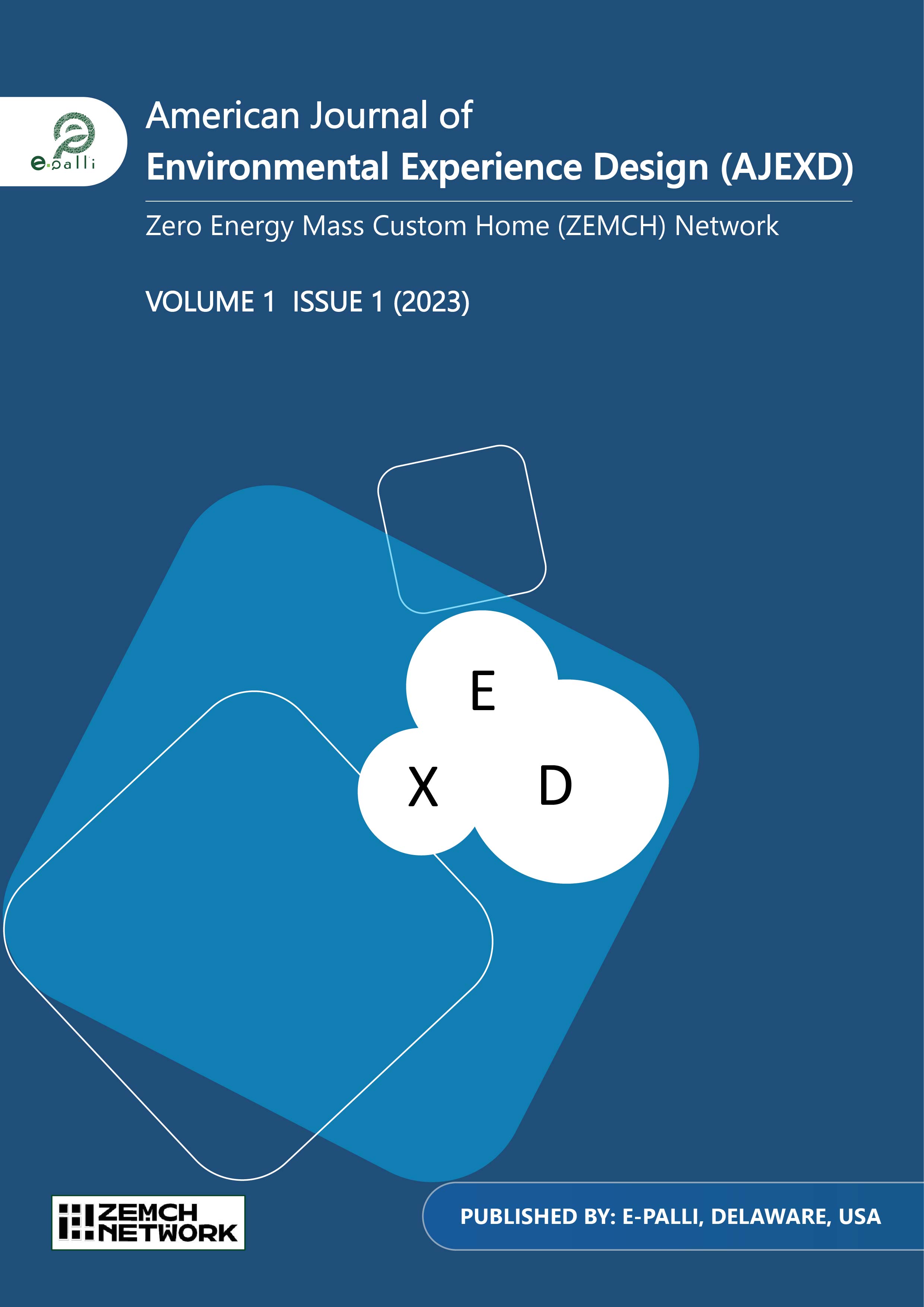Adopting Passive Design Strategies to Improve Emergency Shelters in Maiduguri Nigeria
Keywords:
Built Environment, Emergency Shelter, IDP Camp, Passive Design, SustainabilityAbstract
The Boko haram insurgency in Maiduguri that started in 2009, causing chaos and displacement of people all over the region has been challenging to the people and the government of Borno state, the insurgency has subsided to success with the help of the Nigerian government and the humanitarian aids. By early 2023, the State Government has made significant progress in closing Internally Displaced People (IDPs) camps in Maiduguri and resettling displaced individuals, the process has been quite challenging. However, the returnee’s safety, well-being, and sustainable reintegration remain pressing concerns. The study aims to focus on the recovery process in rehabilitation and reconstruction of post-disaster affected areas to build back better, through methods of identifying the needs of the (IDPs) and by adopting the sustainable reconstruction framework with analysis of how it will positively impact the social, economic, and environmental development of the community. By adopting a passive design concept through Architectural design, proposing floor plans and 3D prototypes that can be constructed in the Bakassi (IDP) camp to re-establish livelihood and increase community resilience, contributing to the 2030 agenda of sustainable development goals (SDG) through developing a long-term emergency shelter design that acclimatizes to the built environment.
References
Albadra, D., Coley, D., & Hart, J. (2018). Toward healthy housing for the displaced. The Journal of Architecture, 23(1), 115–136. https://doi.org/10.1080/13602365.2018.1424227
Altan, H., Hajibandeh, M., Tabet Aoul, K. A., & Deep, A. (2016). Passive Design. In M. Noguchi (Ed.), ZEMCH: Toward the Delivery of Zero Energy Mass Custom Homes (pp. 209–236). Springer International Publishing. https://doi.org/10.1007/978-3-319-31967-4_8
Bashawri, A., Garrity, S., & Moodley, K. (2014). An Overview of the Design of Disaster Relief Shelters. Procedia Economics and Finance, 18, 924–931. https://doi.org/10.1016/S2212-5671(14)01019-3
Displacement Tracking Matrix. (2024). Nigeria—Borno—Intention survey (April 2024). International Organization for Migration. https://dtm.iom.int/reports/nigeria-borno-intention-survey-april-2024
Gbode, I. E., Adeyeri, O. E., Menang, K. P., Intsiful, J. D. K., Ajayi, V. O., Omotosho, J. A., & Akinsanola, A. A. (2019). Observed changes in climate extremes in Nigeria. Meteorological Applications, 26(4), 642–654. https://doi.org/10.1002/met.1791
Gilcrease, M. (2020). Emergency response shelter prototype.
Hendawy, M., Junaid, M., & Amin, A. (2024). Integrating sustainable development goals into the architecture curriculum: Experiences and perspectives. City and Environment Interactions, 21, 100138. https://doi.org/10.1016/j.cacint.2023.100138
Kamta, F. N., & Scheffran, J. (2022). A social network analysis of internally displaced communities in northeast Nigeria: Potential conflicts with host communities in the Lake Chad region. GeoJournal, 87(5), 4251–4268. https://doi.org/10.1007/s10708-021-10500-8
Kamta, F. N., Schilling, J., & Scheffran, J. (2020). Insecurity, Resource Scarcity, and Migration to Camps of Internally Displaced Persons in Northeast Nigeria. Sustainability, 12(17), 6830. https://doi.org/10.3390/su12176830
Mohammed, F. (2022). Displacement to the camp vs Displacement to the city: A comparative study of Internally Displaced Persons’ capabilities in Maiduguri, Borno State, Northeastern Nigeria.
Nzelibe, T. N., Oyinloye, M. A., Popoola, O. O., & Ilesanmi, F. A. (2024). Spatial Analysis of Internally Displaced Persons’ Camps in Borno State, Nigeria. American Journal of Geospatial Technology, 3(1), 27–34. https://doi.org/10.54536/ajgt.v3i1.2614
OCHA. (2024, April 4). Area-based assessment on returns, relocations and selected settlements in Borno State, Nigeria (GSSSS IDP Camp and Soye Resettlement in Bama LGA). United Nations Office for the Coordination of Humanitarian Affairs. https://www.unocha.org/publications/report/nigeria/area-based-assessment-returns-relocations-and-selected-settlements-borno-state-nigeria-gssss-idp-camp-and-soye-resetlement-bama-lga
Ochoa, C. E., & Capeluto, I. G. (2008). Strategic decision-making for intelligent buildings: Comparative impact of passive design strategies and active features in a hot climate. Building and Environment, 43(11), 1829–1839. https://doi.org/10.1016/j.buildenv.2007.10.018
Opdyke, A., Goldwyn, B., & Javernick-Will, A. (2021). Defining a humanitarian shelter and settlements research agenda. International Journal of Disaster Risk Reduction, 52, 101950. https://doi.org/10.1016/j.ijdrr.2020.101950
Rodriguez-Ubinas, E., Montero, C., Porteros, M., Vega, S., Navarro, I., Castillo-Cagigal, M., Matallanas, E., & Gutiérrez, A. (2014). Passive design strategies and performance of Net Energy Plus Houses. Energy and Buildings, 83, 10–22. https://doi.org/10.1016/j.enbuild.2014.03.074
Smith, P. F. (2002). Architecture in a climate of change: A guide to sustainable design (Reprint). Architectural Press.
Sustainable Reconstruction & Recovery Framework. (n.d.). World Green Building Council. Retrieved September 11, 2024, from https://worldgbc.org/sustainable-reconstruction-recovery-framework/
The New Humanitarian. (2024, June 13). Nigeria camp closure raises concern over conflict returns. https://www.thenewhumanitarian.org/news/2024/06/13/nigeria-camp-closure-raises-concern-over-conflict-returns
UNDP. (2023). Sustainable reconstruction: A framework for inclusive planning and financing to support green transition in the Arab States region. United Nations Development Programme. https://www.undp.org/arab-states/publications/sustainable-reconstruction-framework-inclusive-planning-and-financing-support-green-transition-arab-states-region
Wilson, M. (2011). An architectural perspective.
Downloads
Published
Issue
Section
License
Copyright (c) 2023 Fatima Umar, Umar Aliyu Mohammed, Zara Baba Bukar, Abdullahi Nura Sani

This work is licensed under a Creative Commons Attribution 4.0 International License.





